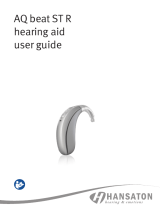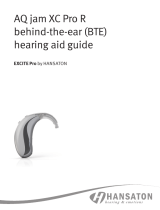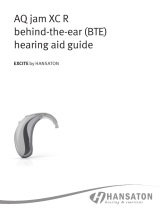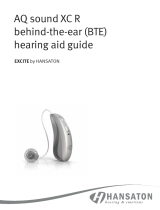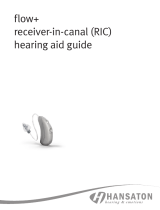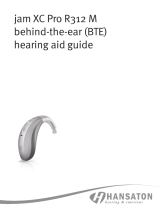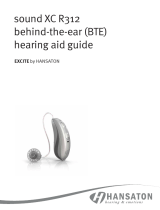
Your hearing aids at a glance ..................................................... 2
Warnings .................................................................................... 5
Tinnitus masker ........................................................................17
Turning your hearingaids onando .......................................20
Putting your hearing aids on your ears......................................21
Operating instructions ............................................................. 23
Your rechargeable hearing aids .........................................26
Charging your hearing aids ................................................28
Pairing your mobile phone with your hearing aids ............ 33
Phone calls with a mobile phone ...................................... 35
Using your mobile phone with your hearing aids ..............36
Adjusting volume balance between mobile phone
calls and your environment ............................................... 38
TV Connector ..................................................................... 39
Tinnitus masker ........................................................................ 40
Flight mode ...............................................................................41
Connectivity overview .............................................................. 42
Caring for your hearing aids ..................................................... 43
Accessories .............................................................................. 47
Troubleshooting guide .............................................................49
Information and explanation of symbols ................................. 56
Compliance information ........................................................... 59
Your feedback .......................................................................... 63
Additional notes ....................................................................... 64
Table of contents
Table des matières
Aperçu de vos instruments auditifs .........................................66
Avertissements ........................................................................69
Masqueur d’acouphènes .........................................................81
Mise en marche et arrêt de vos instruments auditifs ...............84
Mise en place des instruments auditifs sur vos oreilles .......... 85
Instructions d’utilisation.......................................................... 87
Vos instruments auditifs rechargeables ...........................90
Chargement de vos instruments auditifs .......................... 92
Coupler votre téléphone mobile avec vos
instruments auditifs .......................................................... 97
Appels téléphoniques avec un téléphone mobile ............. 99
Utiliser votre téléphone mobile avec vos
instruments auditifs ........................................................ 100
Régler l’équilibre du volume entre les appels de
votre téléphone mobile et votre environnement ............. 102
TVConnector ................................................................... 103
Masqueur d’acouphènes ....................................................... 104
Mode avion .............................................................................105
Aperçu de la connectivité ....................................................... 106
Entretien de vos instruments auditifs .....................................107
Accessoires ............................................................................. 111
Guide de dépannage ............................................................... 113
Information et explications sur les symboles ........................ 120
Information sur la conformité ................................................ 123
Votre rétroaction .....................................................................127
Remarques supplémentaires ................................................. 128





















